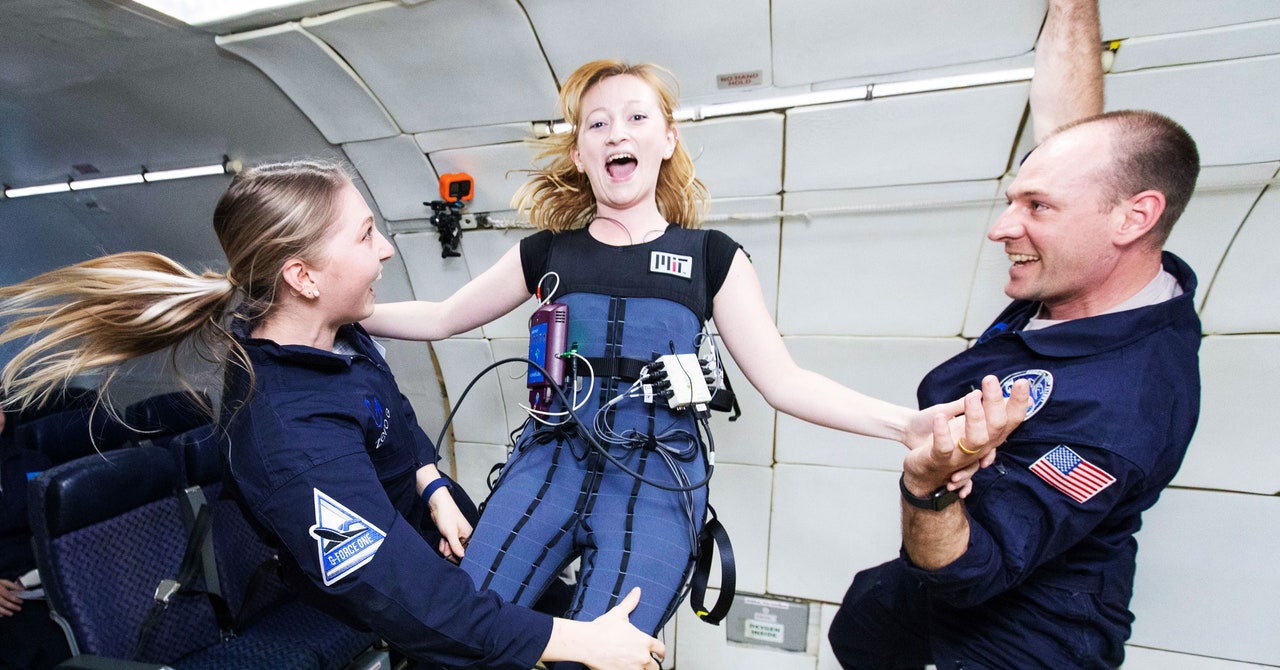
On Monday, an astronaut capsule that looks like a giant orange juicer splashed down in the Atlantic Ocean, bringing its four-person crew back under the influence of Earth’s gravity. These astronauts have spent six months on the International Space Station, and so the gravity now tugging at their bodies will feel familiar to them, but strange.
This team, called SpaceX Crew-2, spent much of the past half-year in orbit doing spacefaring scientific work, like testing out “tissue chips,” small-scale analogs of human organs. But they also whiled away the hours as gym rats: Six days a week, they had a 2.5-hour exercise block to reduce the damage that living in space can do to the body. Space, as they say, is hard. But it’s particularly hard on humans. Radiation, lack of gravity, and living in confined spaces each take their tolls.
“NASA has always been concerned with the effects of spaceflight on the human body, from the very first space missions,” says Michael Stenger, element scientist for Human Health Countermeasures, the agency’s arm dedicated to understanding how spaceflight affects physiology and mitigating those effects. One big problem is that living on-orbit is physiologically similar to bedrest, even if you’re bouncing around doing experiments all day. “Being in space is a lot like laying around doing nothing,” he says.
When you don’t need to counteract gravity, your muscles and bones lose strength, because those parts of the anatomy adhere to a sort of “use it or lose it” philosophy. Muscles can atrophy, the same way they would if an astronaut laid on the couch playing Fallout all day. Bones can lose mass: They both form and break down based on the forces they experience day to day, from both gravity and muscle use. After six months in space, the proximal femoral bone in the leg can ditch around 10 percent of its mass, requiring years of recovery back on the ground.
Space is also hard on the cardiovascular system, says Stenger: “Your heart no longer has to pump as hard to maintain blood pressure, so your heart becomes weaker.” During astronaut Scott Kelly’s year in space, his heart shrank in size by more than a quarter, adapting to fit its new conditions. Back under the influence of gravity, the heart can pump itself back up to normal, seemingly without long-term damage.
Scientists don’t fully understand why, but astronauts’ spines also grow longer in space, and they gain a few inches of height. The travelers shrink back to their normal sizes on Earth, but after flight, astronauts have a higher risk of disk herniation, which may be associated with these spinal shifts. Also, their suits and equipment have to be designed for their dimensions—and if those dimensions are changing, the design gets complicated, especially for a longer trip.
To keep astronauts’ innards fit for their tasks in space and healthy once they’re back on Earth, Human Health Countermeasures has tried to right these physiology wrongs—in part with gym gear built for space. The Advanced Resistive Exercise Device is a sort of space-based Bowflex: It uses vacuum cylinders to create a few hundred pounds of resistance, and microgravity athletes can reconfigure it to do deadlifts, squats, or bench presses for two hours, including the time it takes to reconfigure the device and do a little recovery. The ISS is also kitted out with a treadmill and a cycling machine, which the astronauts use for 30 minutes of interval training.


